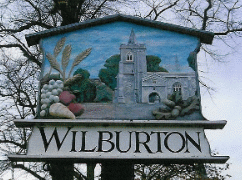ECDC - CLTs and Profit

It is clear from ECDC documents that the intention behind promoting CLTs in the East Cambs region is that of money - to plug a future shortfall in council funding. ECDC have set up East Cambs Trading Company (ECTC) - with an aim to profit from development under the CLT name. They also attempted to create policies to make pushing CLTs through planning easier - although these were rejected by the planning inspector in 2018, and the use of open market housing on community led developments was queried by a planing inspector in 2015.
Trading under the name Palace Green Homes, as well as East Cambs Community Housing - the council are behind the Haddenham CLT development, and the application at Kennett (which councillors voted to accept - a 330% increase to a small village).
ECDC gave ECTC a £5m loan - to be repaid in full by 2021. This has now been increased to £6.5m - as well as loans from the Combined Authority. In their latest budget statement, ECDC mention ECTC in sections 9.7, 11.6, 12.4, 12.5, 12.7 and 12.8 - plus in the appendices. Section 12.7 and 12.8 state:
12.7 Options to resolve the budget shortfalls in future years come from:
- Reductions in service costs/levels
- Increased Council Tax
- Increased income
- Increased commercialisation via its trading companies
12.8 It is recommended that plans focus on the latter two bullets above, with a quickening of the pace of commercialisation and the review of all income generating opportunities. However, if insufficient progress is made, discussions around service levels and increased Council tax will be necessary.
It is also noted that 11.6 states:
A key risk around reserves is the risk exposure the Council can afford to take in loan funding the ECTC. Should ECTC encounter any financial difficulties, then the Council, as sole shareholder and guarantor, will be liable. In such an event, the Council would need to draw on reservers to meet such a liability.
The Combined Authority Board Paper shows the extent of both further loans (a £40m facility) and the level of house building that ECTC have as a ten year pipeline - with 1850 homes - initially stating 553 affordable and 1297 market homes - but the affordable number drops to approx 500-550 later, potentially providing less affordable homes via supposed CLT development than commercial developers are required to provide. There is no mention of where these 1850 houses will be built.
The ECTC Business Plan 2018 also highlights the money expected to be generated from "CLT" - excluding and including Kennett Garden Village. The initial figures show a considerable loss, which if the future of CLT development in East Cambs is jeopardised in any way would result in a significant loss to the Council, and ultimately the tax payer. This would appear to be a gamble that should not have happened.
In the recent local plan examination - the planning inspector made several recommendations for the 2017/18 local plan to be sound, including that all ECDC policies relating to community-led development should be removed as well as the Kennett proposal. There has yet to be a statement as to why, but maybe the planning inspector did not think this was an appropriate use of community-led development. ECDC have now decided to scrap the 2017/8 local plan and revert to the 2015 plan (the 2018 plan was estimated to have cost around £300,000 to create) - presumably so that they can keep some of their money-generating CLT policies in place.
They have continued to demonstrate "profit" over "affordable housing" - with examples such as calls for radical rethink and want 50 of the former RAF homes in the city to be set aside for social housing - with ECDC are only keeping 15 houses out of 88. The East Cambridgehire region had no social houses built in the past year (Cambridge's affordable housing is anything but) - this opportunity should not have been missed to provide social rent housing for the county.
It is a great business plan, but it sadly appears to have little to do with genuinely affordable housing. The latest ECTC Business Plan suggests only 25% affordable housing. The Kennett decision clearly shows they do not require or even care about community support. Maybe this should be termed "commercial development", and not "CLT".
Next: Housing Need